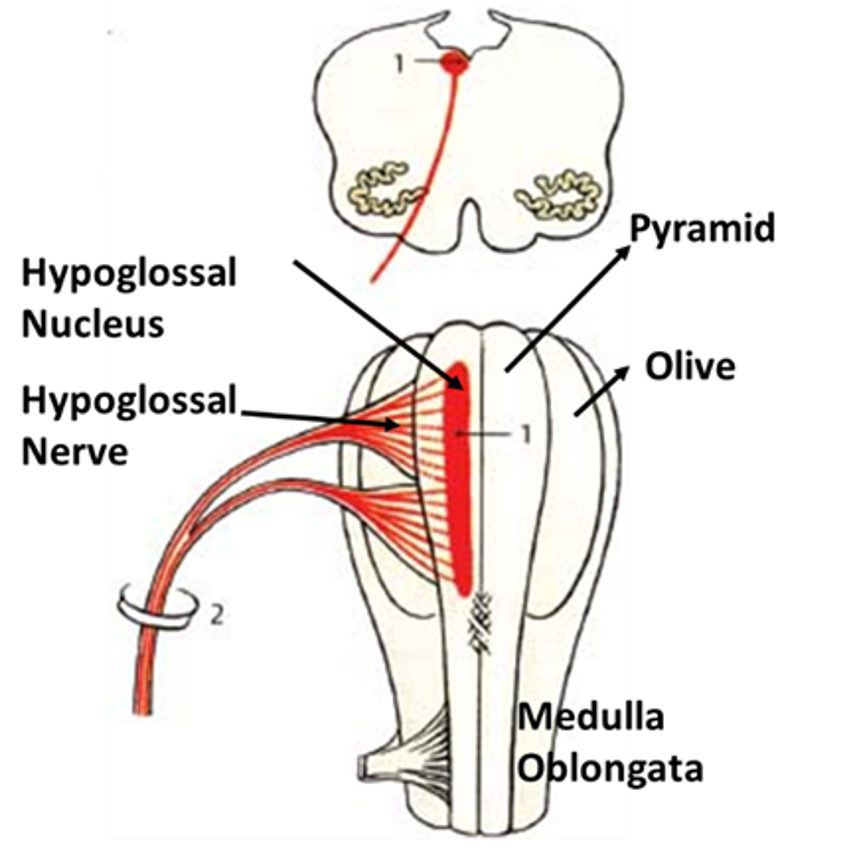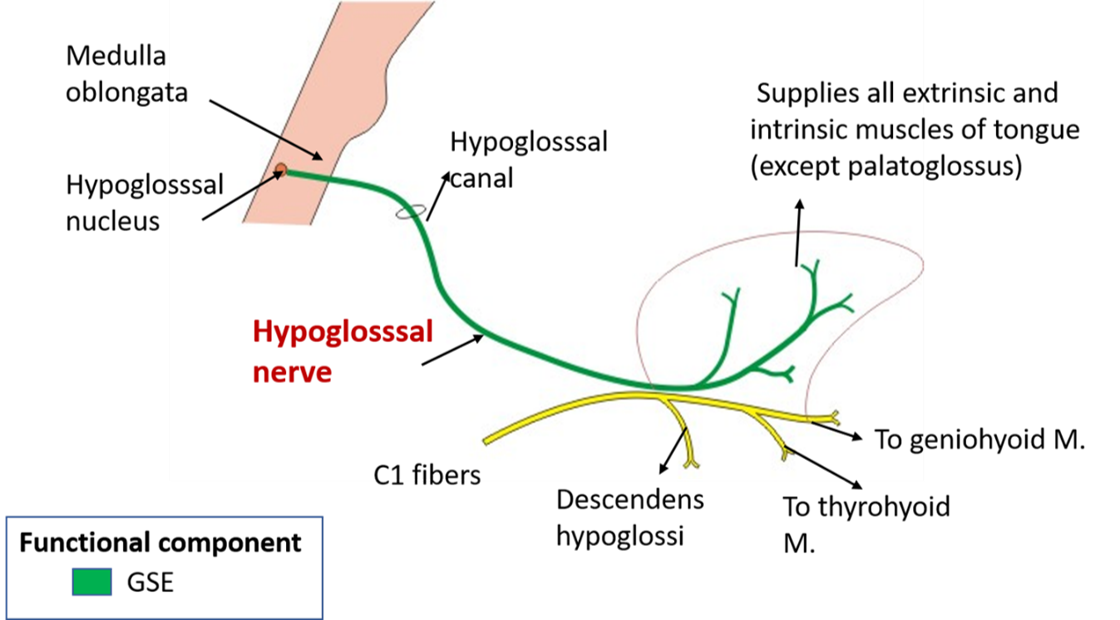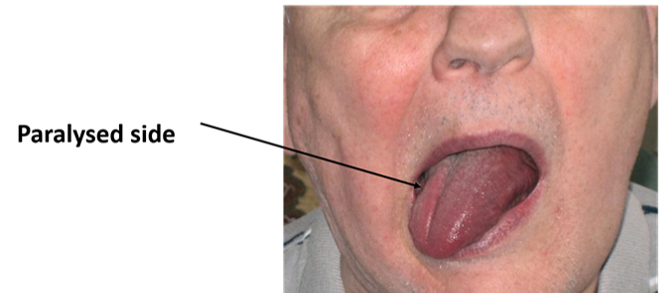Advertisements
Introduction
Hypoglossal nerve is the 12th cranial nerve. It is purely motor nerve.
Origin: Its nucleus is located in the medulla in the lower part of the floor of the fourth ventricle.

Name the nuclei, functional components and distribution of hypoglossal nerve .
Following are the nuclei, functional components of hypoglossal nerve:
| Function component | Nucleus | Structures innervated |
|---|---|---|
| GSE (General somatic efferent) | Hypoglossal nucleus in medulla oblongata | All the intrinsic and extrinsic muscles of tongue except palatoglossus. |
Describe the course of hypoglossal nerve.
- It emerges from the ventral surface of medulla between the pyramid and olive.
- Leaves the cranial cavity by passing through the hypoglossal canal.
- Descends in the neck between the internal jugular vein and internal carotid artery.
- Passes deep to posterior belly of digastric and stylohyoid muscle to reach the carotid triangle.
- It passes forwards by passing superficial to internal carotid, external carotid and lingual arteries.
- It runs superficial to hyoglossus muscle and then deep to mylohyoid.
- It supplies all the muscles of tongue except palatoglossus.
Enumerate the branches of Hypoglossal nerve.
- Meningeal branch: it arises from the hypoglossal nerve as it comes out via the hypoglossal canal and enters the cranial cavity via the hypoglossal canal and supplies the dura mater of the posterior cranial fossa.
- Branches from C1 nerve that joins hypoglossal nerve:
- Descendens hypoglossi or upper root of ansa cervicalis: It arises as the nerve crosses in front of the internal carotid artery. It runs downward to join the inferior root of ansa cervicalis to form ansa cervicalis.
- Nerve to thyrohyoid
- Nerve to geniohyoid
- Branches to all the intrinsic and extrinsic muscles of tongue except palatoglossus.

Applied Aspect
Lesion of hypoglossal nerve
Lesion on one side results in lower motor neuron type of paralysis of muscles of the tongue. When patient is asked to protrude his/her tongue, the tip of the tongue deviates to the paralyzed side as a result of unopposed action of genioglossus of the healthy side.


I keep talking to my self what should I do